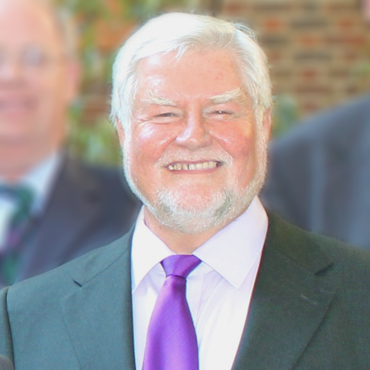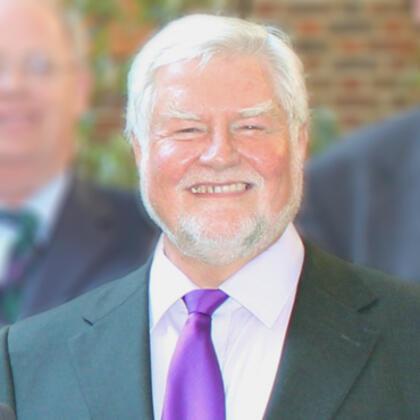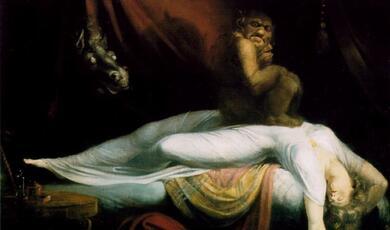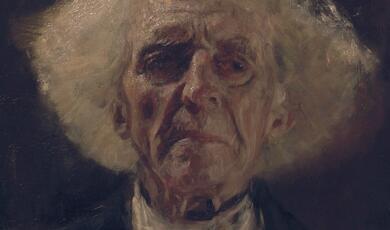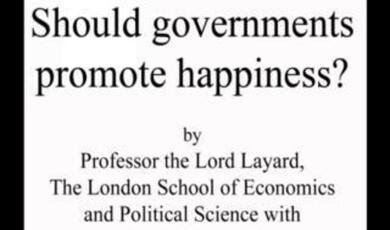The Psychology of Performing Arts: Stage fright and optimal performance
Share
- Details
- Text
- Audio
- Downloads
- Extra Reading
This talk gives an overview of the causes and cures of performance anxiety. Under what circumstances is it most likely to occur? When is emotional arousal beneficial to performance and when destructive? The pros and cons of various approaches to treatment of stagefright (beta-blockers, cognitive behaviour therapy, Alexander Technique, hypnosis, etc). Techniques for enhancing ('hyping up') performance, such as imagery and self-talk.
Download Text
THE PSYCHOLOGY OF PERFORMING ARTS: STAGE FRIGHT AND OPTIMAL PERFORMANCE
Dr Glenn Wilson
Stage fright or 'performance anxiety' is an exaggerated and more or less debilitating fear of public appearance. It ranges from mild distress to total panic and frequently impedes career development in the performing arts and professions that require public speaking. Like other phobias it is not amenable to reason. Exhorting a sufferer to 'pull themselves together', like a pair of curtains, is unlikely to help.
Among the many techniques recommended for disarming the audience is to imagine them all sitting there nude. That might not be a pretty sight and, anyway, nervous performers are more likely to feel as though they are themselves exposed in all their glory. In public speaking classes, it is often advised that you should ask yourself if there anyone in the audience who knows more about the topic on which you are speaking than you? Unfortunately, if the answer is yes, you might be worse off than you started.
Stage fright is felt by most amateurs to some degree but is not correlated with talent or ability. Nor does it necessarily diminish with experience or accomplishment. Some top pros have been troubled by it well into their careers. At the height of his fame, Laurence Olivier suffered from almost incapacitating stage fright. During a run of Othello he was so terrified of his soliloquies that he asked another actor to stand just offstage so he 'would not feel so alone'. Richard Burton shook and sweated before going on stage for Equus, fearing that he had 'lost the ability to command'. Barbra Streisand was unable to sing live concerts for 27 years after once forgetting her words during a concert at New York's Central Park. Carly Simon used to stick pins in her hand before a performance to distract herself from her anxiety and once asked the entire brass section of the band to spank her just before the curtain rose.
Perhaps the problem faced by famous performers is that expectations, both their own and those of their audiences, are raised so high that they doubt their ability to live up to them. Once on the top of the pedestal the only way left to go is down. There may also be awareness of failing faculties and youngsters snapping at their heels.
Stage fright is characterised by an intense feeling of being subject to public scrutiny combined with a belief that one is likely to fail to deliver. All the adrenaline effects that accompany fear are experienced, including 'butterflies' in the stomach, dry mouth, palpitation, sweaty palms, dizziness, shortness of breath, stammering, and inability to think clearly. These are due to activation of the general fight/flight emergency system that is part of our evolutionary heritage and which would have survival value if fighting or running away from an audience were appropriate. It is as though, in the human world, social isolation has such serious consequences that fear of sabre tooth tigers has given way to a dread of public humiliation.
Harvard sociobiologist E.O. Wilson says that, for our ancestors, being intently scrutinised and singled out was often a prelude to being eaten by a predator, hence our dread of losing the protection of the group. It is therefore important to keep a sense of proportion. The audience are not predators - they may kill us but they almost certainly won't eat us.
The problems associated with stage fright are widespread. A study of students and staff at the University of Iowa School of Music yielded the following percentages:
21% 'experienced marked distress'
40% 'moderate distress'
17% 'marked impairment'
30% 'moderate impairment'
9% 'often avoided performance opportunities'
13% 'interrupted a performance at least once'
15% 'sought professional help'
Musicians seem particularly vulnerable. My own research found that nearly half of musicians suffered from stage fright at one time or another compared with about a third of actors, singers and dancers. This may be because the requirements of musical performance are more exacting than those of other performers; mistakes are likely to be conspicuous. I was in the audience at the Hollywood Bowl one night when, unforgettably, the pianist hit the wrong chord in the opening of the Tchaikovsky piano Concerto. This, of course, stood out like a sore thumb (perhaps it was because he had one).
Solos are worse than group performances because the level of felt scrutiny and self-consciousness is much higher. It has been shown that anxiety diminishes logarithmically with the number of fellow performers that are available to hide among. Auditions and competitions are more stressful than performance itself, even opening night. This is because the evaluation factor is substantially higher; by the time of the performance you at least have the reassurance that somebody has picked you for the part.
Stage fright is not always destructive. Dutch psychologist De Fries (1999) found that actors were more likely to report that stage fright facilitated their performances rather than interfere with them. It seems that they had learned to value the positive energy they derived from it.
Beneficial effects of anxiety on acting were demonstrated in a study by his colleague Ellie Konijn. She studied four actors as they rehearsed and performed a one-hour play, monitoring heart rate along with self-ratings of stress and quality of performance. She also had external judges rate the performances. The presence of an audience greatly increased their heart rate during the first 5 minutes on stage (averages of 141bpm for the first performance vs 96bpm for the dress rehearsal). These high levels of stress were confirmed both by performers themselves. Most interestingly, actors and judges also agreed that the quality of performance was higher with a live audience. In other words, stress and the quality of performance were positively related. There was also evidence to support the popular theatrical notion of a 'second night dip' - a slight anti-climax after the excitement of opening night.
The effects of stress or arousal on performance quality are described in the Yerkes-Dodson Law. Performance improves with increases in arousal up to a certain point, after which there is a decline, yielding an inverted-U function relating arousal and performance. The optimal point is reached more rapidly when the task is cognitively complex (needing a clear head) rather than energy expenditure. Something it may help performers to know is that the best performances (objectively assessed) occur at a level of arousal that is felt as uncomfortable to themselves.
The Yerkes-Dodson Law may be extended to a three-dimensional model, in which three major groups of variables are considered in predicting when anxiety is likely to go 'over the top'. (1) the trait anxiety of the performer - the constitutional and learned tendency for certain individuals, more than others, to become anxious under conditions of social stress. (2) the degree of task mastery that has been achieved - works that are intrinsically simple or so well-prepared that they have become so are less susceptible to disruption by anxiety than those that are complex or under-rehearsed. (3) the situational stress prevailing, e.g., special pressures like solos, auditions, competitions or important public performances.
These three factors vary independently and whether or not anxiety is detrimental or beneficial depends on the interplay among them. Various deductions may be made from the model. For example, anxiety-prone individuals should select easy pieces or works with which they are thoroughly familiar, especially for auditions or major public occasions; those less susceptible might be more adventurous in their choice of a work. If the choice of work is outside the control of the performer then hard rehearsal may be needed to render a difficult work straightforward.
Hardy & Parfitt (1991) argue that a catastrophe model fits best both in sport and performing arts. Once anxiety goes 'over the top' and disaster is sensed there may be a precipitous downturn in the performance with little chance of retrieval. This is most likely to occur when cognitive anxiety is high as opposed to bodily agitation. Clearly, worries about whether the performance will be successful and fears of the consequences of failure, are more likely to lead to a collapse of concentration and memory than increased bodily arousal due to exercise or coffee. Mental anxiety may produce a vicious spiral whereby failure becomes a self-fulfilling prophecy, early mistakes leading to an escalating pattern of distraction and worry.
Catastrophe theory fits research on the destructive self-talk of musicians (Steptoe & Fidler, 1987). The most detrimental style of pre-performance thinking they called catastrophising(e.g., I think I am going to faint; I'm sure to make a dreadful mistake and that will ruin everything). The best kind of self-talk was realistic appraisal (I'm bound to make a few mistakes, but so does everyone; the audience wants me to play well and will make allowance for a few slips; I'll concentrate on technical aspects of the music and the interpretation I've prepared). Not surprisingly, performers who catastrophise are most prone to stage fright. Realistic appraisal, showed the classic curvilinear relationship with performance anxiety, being used most by those with moderate (optimal) levels of anxiety.
Various drugs have been used to tackle stage fright, both officially and self prescribed. These are of three main types: (1) Anxiolytics(e.g.,alcohol,benzodiazapines, cannabis) are often used in self-treatment but they diminish performance, are more or less addictive, and ultimately destructive - hence are not to be recommended. (2)Stimulants (e.g., caffeine, amphetamine, cocaine) are also widely used in self-treatment - to stay awake and to provide energy and inspiration (especially among jazz musicians with late night gigs). These tend to be addictive and detrimental in the long-run and should also be avoided. (3) Beta-blockers(e.g., nadolol, oxprenolol) are supposed to control the physical symptoms of fear without cognitive impairment. They are used by many orchestral musicians, particularly for auditions and important occasions (27% according to one American survey) but their side effects are potentially serious and their efficacy unclear. Controlled trials show that they do reduce heart rate and tremor but have minimal effect on subjective anxiety and do not consistently improve the quality of musical performance. They also raise ethical issues akin to the doping of athletes.
Exercise is a much healthier approach than drugs. Physical activity is an effective antidote to anxiety and depression and fitness has been shown to promote stress resistance. Exposure to fresh air and open sky (even if not blue) is also beneficial, especially in winter, when many people in Northern latitudes suffer vitamin D deficiency. It is important to take regular breaks between practice sessions to avoid the 'cluttering' of memory. A proper sleep routine is equally important. Sleep is not just time wasted; it consolidates new learning. Late nights and drinking, by contrast, impair concentration. A snooze before an important performance is usually better than a last-minute rehearsal.
A classic behaviour therapy approach to phobias of all kinds is calledsystematic desensitisation. This begins with training in muscle relaxation (possibly including biofeedback), then feared scenarios are introduced in graded doses, usually in imagination first, then in reality. The theory is to break the fear>escape habit by persuading the performer to remain exposed to the source of their terror until it proves its harmlessness. This procedure has a good record of success, especially with speech anxiety, but does not address the obstinacy of stage fright in seasoned performers.
There is evidence that hyperventilation is common among nervous performers, making it akin to panic disorder. Overly fast and deep breathing, surplus to requirements, leads (paradoxically) to oxygen deprivation in the brain, hence dizziness and loss of concentration. The problem applies particularly to singers and wind-instrument players and seems to be more common in female performers.
A suitable treatment in such cases is breathing retraining, which involves learning to breathe slowly, especially in the expiration phase. Of course, this is an important component of relaxation training and therefore is often done in connection with other behavioural therapies.
Cognitive therapies are concerned with maladaptive modes of thinking and the way in which attention is allocated during performance. The focus of attention may be in three directions:
(1) The self: How am I looking? Am I playing well?
(2) The audience: How are they reacting? Are they impressed or showing signs of boredom/dislike?
(3) The music: Absorption in its technical intricacies, its shape and the emotions evoked by it.
Absorption in the work, rather than the self or the audience, is associated with the least anxiety and the best performance. Cognitive therapy may therefore be aimed at redirecting the attention of the performer toward the artistic flow of the work.
Performance may be disrupted by many types of irrational, negative thoughts:
Over-generalization: 'I never...' 'I always...'
All-or-nothing thinking: 'I am either a star or a loser...'
Disqualifying the positive: 'They liked my performance, but what do they know?'
Self-reference: 'Whatever is said about my performance is about me'
Superstition:'Without my pre-performance ritual I can't perform well.'
Catastrophising: 'Once I make a mistake I'll never get back on track.'
Cognitive therapy seeks to rationalise thought patterns, identifying those that are destructive and replacing them with positive ones.
Developing realistic expectations can be as useful as positive affirmations. In the technique called stress inoculation performers are taught to anticipate adrenalin effects and to 'befriend' them - reframing them as less threatening, or even desirable. It is pointed out that: (a) these symptoms are seldom conspicuous to the audience, (b) even if they are noticed, are just as likely to impress as artistic emotionality, (c) they contribute 'electricity' to a performance, (d) they are similar to what is felt if running to catch a bus or having sex (energisation or excitement rather than fear). Relabelling adrenaline effects as excitement breaks the vicious cycle of 'fearing fear', which can easily tumble towards panic.
A potentially harmful strategy of 'hedging bets' that is adopted by some performers is called self-handicapping. It begins with advance excuses along the following lines:
'I have a sore throat at the moment'
'I've never seen this music before.'
'My teacher demands an interpretation that doesn't suit me.'
'I would have done better if I hadn't had a late night.'
Such pessimistic self-talk easily becomes self-fulfilling prophecy, increasing the need for an excuse. The next step is self-sabotage, e.g., failing to attend rehearsals, damaging one's own instrument, or deliberately getting drunk before a performance. Susceptible individuals need to watch for signs of self-handicapping in themselves and insert positive strategies.
Some performers find it helpful to visualize ideal accomplishment, (e.g., imagining themselves as Margot Fonteyn at Covent Garden or Pavarotti at La Scala). This goal-imaging approach is most applicable when the act has visual aspects (e.g. dance or acrobatics) but can help musical performance as well. Grandiose fantasies mimic the effects of stage hypnosis, in which ordinary members of the public have been known to display previously unrecognised talent. There is evidence that mental rehearsal, when optimistic and goal-directed, can optimise performance both in sport and the performing arts. The trick is to 'picture it perfect' so at least you know what you are aiming at.
In summary, here is a checklist which troubled performers might use like an airline pilot's preparation for take-off:
(1) Ask yourself if your tension really is detrimental? It might actually be helping to focus your attention and add a spark to your performance.
(2) Is your anxiety telling you something useful? Could you have bitten off more than you can chew or need more preparation? Of course, this is not a question to ask yourself when it is already too late.
(3) Do you need to 'clean up your act'? Avoid the 'crutches' of alcohol or drugs. Be certain you are getting adequate sleep and exercise.
(4) Is hyperventilation part of your problem? If so, try some slow-breathing exercises.
(5) Do you suffer from conditioned fear? Cognitive-behaviour therapy might help.
(6) Are you self-obsessed? Focus on the process and enjoyment of the work rather than your own feelings or audience
reactions.
(7) Do you catch yourself engaging in negative or catastrophising self-talk? If so, learn to replace it with positive goal-imaging.
Depending on how serious the problem is, you might get through with self-study but if things really get rough seek help from a professional counsellor. After all, the self-help techniques are far from infallible. The renowned Ukrainian cellist Piatigorky, who suffered badly from stage fright, once told a friend: 'Before a concert, I say to myself, Grischa, don't be nervous, you are the great Piatigorsky!' 'And does it help?' asked the friend. 'No - I don't believe myself'.
Bibliography
Wilson, G.D. (2002) Psychology for Performing Artists (Second Edition). Whurr, London (now part of John Wiley). (The majority of other references are to be found within this.)
.
©Dr,Glenn D Wilson Gresham College, 24 March 2009
This event was on Tue, 24 Mar 2009
Support Gresham
Gresham College has offered an outstanding education to the public free of charge for over 400 years. Today, Gresham College plays an important role in fostering a love of learning and a greater understanding of ourselves and the world around us. Your donation will help to widen our reach and to broaden our audience, allowing more people to benefit from a high-quality education from some of the brightest minds.


 Login
Login
